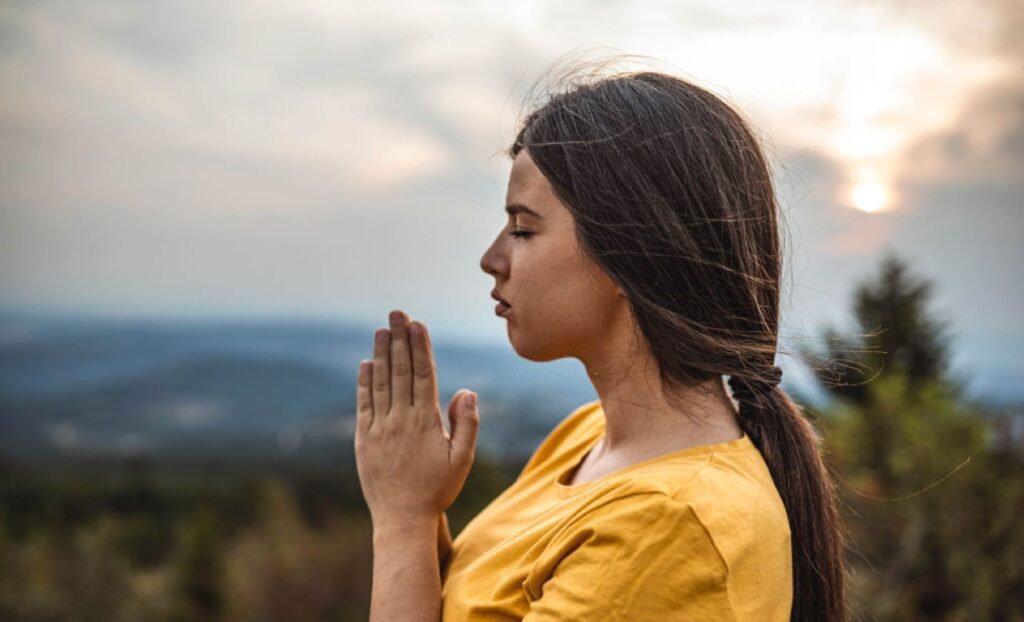Breathing is an essential part of our survival. Breathing properly in a prescribed manner can be a powerful form of exercise, and it can change your life forever. It’s amazing that something as simple as breathing exercises can provide so many health benefits.
Breathing exercises don’t necessarily include just one type of exercise. There are numerous techniques and exercises, and each has different and unique benefits. In this article, you will learn about a very special breathing technique, which is Pranayama Breathing.
What is Pranayama Breathing?

Breathing exercises are not an invention of modern medical science. They have existed since time immemorial. Breathing exercises have been a part of religious practices and have been found in all of the major religions. Archeologists discovered many religious scriptures containing different breathing methods.
Pranayama Breathing is one of the most ancient breathing techniques. Pranayama has been directly derived from Sanskrit – it translates to ‘control of breath.’ Pranayama Breathing has existed since around 5000 B.C. Like yoga, it originated in India and developed along the same timeline as yoga. So, it is evident that it has been a part of Hindu culture for centuries, though it is not limited to Hinduism followers. Like yoga, its benefits and effectiveness are well known worldwide, and it has spread throughout the world to people of different religions and beliefs.
Three Phases of Pranayama Breathing
The three phases of pranayama breathing that are manipulated and regulated to achieve different benefits have names derived from the Sanskrit language. It is interesting to learn them here:
- Purak – Purak means the process of inhalation which is the first step of breathing.
- Kumbhak – This refers to retention. This means keeping the breath inside or holding the breath for a while after inhalation.
- Rechak – This means exhalation, meaning to let go of the breath that you have kept inside.
Health Benefits of Pranayama Breathing

Pranayama Breathing exercises are powerful and carry various health benefits and healing powers. Pranayama breathing can be a part of meditation as well. Let’s get to know some of the specific health benefits that you can get by practicing pranayama breathing:
- Calms your mind: You can achieve a peaceful mental state by practicing pranayama breathing. Adequate oxygenated blood flow helps keep your nerves calm. Pranayama breathing allows you to intake more oxygen into your bloodstream and breathe out toxins. This will help you to calm your mind when you are stressed or anxious and help increase your performance.
- Achieve Mindfulness: Mindfulness refers to paying attention to the present without any judgment. This helps you gain control over your emotions and helps you stay stress-free. Pranayama breathing also focuses on present time breathing which works as a mindfulness practice.
- Makes your lungs strong: The lung is a vital organ of our body that regulates the entire breathing process. Pranayama breathing helps you to improve your lung capacity and strengthen your lung muscles as well.
- Sleep tight: Unstable mental conditions can deprive you of sleep, which can have a huge negative impact on your body. Pranayama breathing can significantly lessen your stress and anxiety, which can help you get better, restful sleep.
Different Types of Pranayama
Pranayama breathing is a practice of many different breathing techniques, and it is not limited to just one type of breathing technique. There are different types of pranayama, but in this article, you will get to know some of the most effective forms of pranayama. They are:
- Dirga Pranayama: This is probably the most basic and widely practiced method of pranayama. It is very simple to follow and the best for beginners.
To practice this method, you need to find a comfortable spot to lay flat on. Now take a breath and fill your belly first. After your belly is filled, take more breath and fill your ribcage. After your ribcage is filled with air, take more breath and fill your chest. Now once your entire abdomen is filled with fresh air, slowly release all the air. Repeat this step 10-20 times every session.
- Nadi Shodhana: This method is known as alternate nostril breathing. This breathing exercise is great for achieving bodily balance. In this breathing technique, you need to feel the breathing as it travels your body.
To get started, find a comfortable position to sit upright with your spine straight. Now cover your right nostril using your thumb. Inhale with your left nostril and try to feel that the air traveling through the left part of your body. Pause for a moment. Now, block your left nostril, and release your right nostril and exhale slowly through it. This time, try to feel that the air is traveling through the right portion of your body and coming out. After you exhale all the air, take a pause for a moment. The next inhale will be through the right nostril, and then you will switch and exhale through the left. That constitutes one round of the technique. Repeat this process 5-10 times or as you wish.
- Ujjayi Pranayama: This technique is referred to as ‘Ocean Breath.’ This means mimicking the sound of ocean waves while breathing.
To get started, sit in a comfortable position. Now breathe through your mouth and constrict the back of your throat as if you are trying to fog up a glass or mirror on the exhale. After that, inhale through the nose, and keep your mouth closed on the exhale, while keeping your throat constricted as you exhale through the nose. The entire process will recreate an ocean wave-like sound.
- Sheetali Pranayama This is a very simple pranayama exercise that is meant to cool the body and emotions. It is also called Cooling Breath. All you need to do is sit in a relaxing position. Then put your tongue on your lower lip and form a roll with your tongue. Inhale deeply through your mouth in this position. Hold the breath for as long as you can and then close your mouth and release it slowly through your nose.
You can repeat this 10-15 times.
Conclusion
In conclusion, pranayama breathing has many exceptional breath work techniques for you to explore. They can positively affect your body and mind top to toe if you do them properly and make pranayama breath work a regular practice. You can get started anytime. Working with a breath work coach to learn is always best, you can also start with books and videos, so begin right away.
You can also read: Breath Watching: All You Need to Know